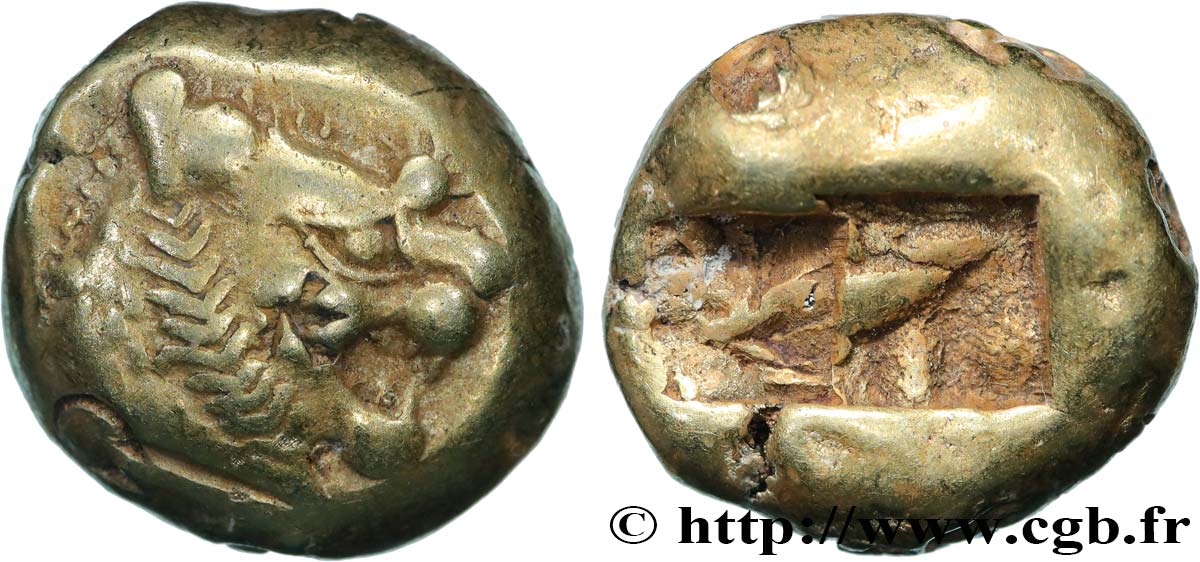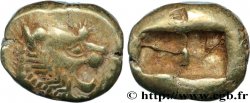bgr_870449 - LYDIA - LYDIAN KINGDOM Trité d’électrum
5 200.00 €(Approx. 5980.00$ | 4472.00£)
Quantity
Add to your cart

Type : Trité d’électrum
Date: c. 610-550 AC.
Mint name / Town : Lydie, Sardes
Metal : electrum
Diameter : 11,5 mm
Orientation dies : - h.
Weight : 4,73 g.
Rarity : R2
Coments on the condition:
Très bel exemplaire sur un flan idéalement centré des deux côtés. Jolie tête de lion, finement détaillée. Patine de collection
Catalogue references :
Predigree :
Avec son certificat d’exportation n°240717 délivré par le Ministère français de la Culture
Obverse
Obverse legend : ANÉPIGRAPHE.
Obverse description : Tête de lion à droite, verrue sur le front (étoile).
Reverse
Reverse description : Double carré creux informe.
Commentary
Contremarque au droit.








 Report a mistake
Report a mistake Print the page
Print the page Share my selection
Share my selection Ask a question
Ask a question Consign / sell
Consign / sell
 Full data
Full data









